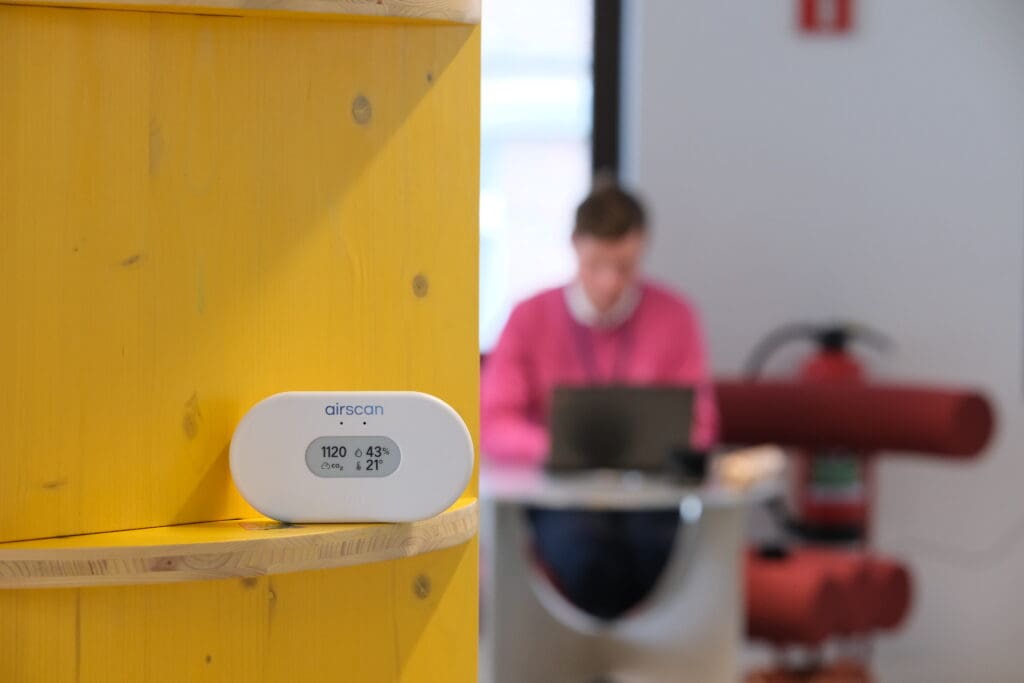Introduction
This quarter, several updates were introduced by the International WELL Building Institute (IWBI) within the WELL Performance Verification Guidebook. The requirements for air quality and thermal comfort monitoring devices were refined. These adjustments were primarily intended to streamline processes, reduce costs, and expand the range of eligible devices. At the same time, important considerations regarding precision and rigor in performance verification are raised.
Key Changes
1. VOC Continuous Monitoring Devices
- Update: The resolution and lower limit of range for continuous monitoring devices was revised from 1 µg/m³ to 10 µg/m³.
- Implication: A broader pool of devices is now considered eligible for use in ongoing monitoring.
2. Air Monitoring Devices
- Update: The calibration and/or replacement timeline for continuous monitoring devices used for air quality was extended from one year to three years.
- Implication: Fewer calibration cycles are now required, resulting in reduced operational costs and simplified documentation.
3. Thermal Comfort Monitoring Devices
- Update: The requirement to document calibration and/or replacement of thermal comfort continuous monitoring devices was removed entirely.
- Implication: The longer lifespan of such devices is acknowledged, and administrative effort is further reduced.
Note: A corresponding change was applied to WELL v2 Feature A08 Part 1 Option 2 and WELL Performance Rating Feature PM2 Part 1 Option 2, which now reference a three-year calibration period. No other changes were made to the WELL Standard feature language.

Pros of the Updates
- Greater flexibility for projects: The eligible range of VOC monitoring devices has been expanded, allowing a broader pool of technology to be considered.
- Reduced costs and administrative burden: Longer calibration intervals (or none in the case of thermal comfort devices) translate into cost savings and simpler documentation.
- Streamlined user experience: Documentation requirements and device management tasks have been reduced, allowing resources to be redirected elsewhere.
- Market responsiveness: Requirements have been aligned with common industry practices and typical device lifespans, supporting a more practical and scalable path.
Cons and Considerations
- Potential loss of sensitivity in VOC monitoring: The increase of the lower detection limit from 1 µg/m³ to 10 µg/m³ may result in the exclusion of subtle concentration changes, reducing the precision of insights in sensitive environments.
- Risk of device drift: Longer calibration intervals may increase the likelihood of measurement inaccuracies, particularly in high-use or high-exposure settings.
- Reduced oversight for thermal comfort devices: The removal of calibration requirements assumes device reliability, while factors such as wear, environmental interference, or rare failures may not be addressed.
- Balancing rigor and accessibility: Although the changes aim to lower costs and simplify processes, concern may be raised that the robustness of performance verification is weakened.

Next Steps for Projects
The updated provisions may be applied immediately by project teams pursuing WELL Certification or the WELL Performance Rating. When alignment with a specific feature is intended, a note within the documentation submission is sufficient.
For a more consistent experience and streamlined review process, upgrading to the latest version of WELL is recommended by IWBI. A tutorial is available on the WELL platform, and additional support can be accessed through the Support Tab.
Final Takeway
The most recent updates to the WELL Performance Verification Guidebook represent a shift toward accessibility, cost-efficiency, and a reduced documentation burden. At the same time, the potential trade-offs in data precision and monitoring rigor should be weighed by project teams and industry stakeholders. As with prior evolutions of WELL, the challenge remains in balancing practicality with the scientific integrity that underpins building health and performance outcomes.



